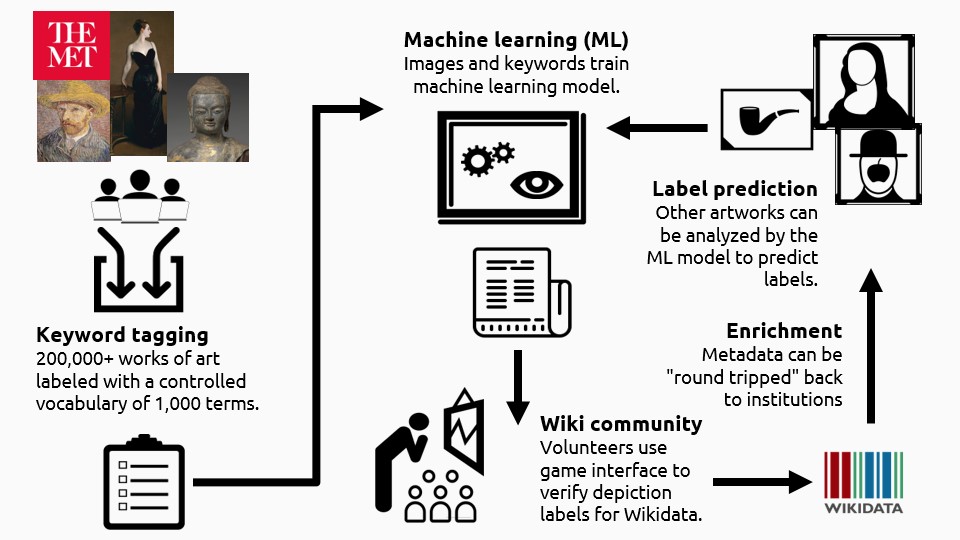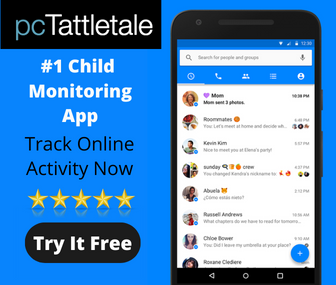Machine learning is a subfield of artificial intelligence that uses algorithms and statistical models to analyze data and make predictions based on patterns and trends in the data. In this post, we will delve deeper into how to develop a machine learning model from scratch, including a more detailed explanation of the steps involved and the benefits that come with using machine learning.
What is a Machine Learning Model?
A machine learning model is a mathematical representation of a problem or system that is designed to learn from data and make predictions or decisions based on that data. The model is trained on historical data, which allows it to identify patterns and trends in the data that it can use to make predictions or decisions with a high level of accuracy. There are many different types of machine learning models, including supervised learning models, unsupervised learning models, and reinforcement learning models.
Uses of a Machine Learning Model
Machine learning models can be used in a wide range of industries and applications, including finance, healthcare, marketing, and e-commerce. They can be used to predict customer behavior, diagnose medical conditions, make stock predictions, and much more. The specific use case will depend on the type of model being created and the data that it is trained on. As you can see, itis important to know how to develop a machine learning model from scratch.

Benefits of a machine learning models
Using machine learning models has numerous benefits, including improved decision-making, increased efficiency, and the ability to process large amounts of data quickly and accurately. By automating the decision-making process and learning from data,
Tools to be used to develop a machine learning model from scratch
There are many tools available to develop a machine learning model from scratch , including programming languages such as Python and R, as well as libraries and frameworks like TensorFlow, PyTorch, and scikit-learn. The choice of tool will depend on the specific use case and the type of model being created. Some tools may be better suited for certain types of models or data sets, while others may be more user-friendly or have more advanced features.

Steps required to develop a machine learning model from scratch
Follow these steps in your organization to develop a machine learning model from scratch:
Data Collection and Preparation: The first step in creating a machine learning model is to collect and prepare the data that will be used to train the model. This may involve gathering data from multiple sources, cleaning and preprocessing the data, and dividing it into training and testing sets.
Choosing a Model Type: Once the data has been collected and prepared, the next step is to choose a model type that is appropriate for the problem at hand. This may involve selecting a supervised learning model for a problem that requires predictions, or an unsupervised learning model for a problem that requires clustering or dimensionality reduction.
Training the Model: After a model type has been selected, the next step is to train the model on the data. This involves using the data to adjust the parameters of the model so that it can make accurate predictions or decisions based on the data.
Evaluating Model Performance: Once the model has been trained, it is important to evaluate its performance to determine how well it is working. This may involve using metrics such as accuracy, precision, recall, and F1 score, as well as visualizing the results of the model to identify any areas for improvement.
Fine-Tuning the Model: Based on the results of the model evaluation, it may be necessary to fine-tune the model by adjusting its parameters or changing its architecture. This may involve making small tweaks to the model or starting over with a different model type.
Deployment: Once the model has been fine-tuned, it is ready to be deployed in a production environment. This may involve integrating the model into an existing system, or creating a standalone application that can be used to make predictions or decisions.
The most used machine learning models you can use
There are many different types of machine learning models, each with its own strengths and weaknesses. In this article, we will describe some of the most commonly used machine learning models and their applications.
Linear Regression:
Linear regression is a supervised learning model that is used to predict a continuous target variable based on one or more independent variables. It is a simple model that assumes a linear relationship between the dependent and independent variables. Linear regression models can be used to predict outcomes such as sales, stock prices, and more.
Logistic Regression:
Logistic regression is a supervised learning model that is used for binary classification problems, where the target variable can only have two possible outcomes. It uses a logistic function to model the probability of a positive outcome and makes predictions based on this probability. Logistic regression models are commonly used in applications such as credit risk assessment, medical diagnosis, and more.
Decision Trees:
Decision trees are a type of supervised learning model that is used for both classification and regression problems. They use a tree-like structure to make predictions, with each node representing a decision based on the value of one or more features. Decision trees are a simple and interpretable model that is often used for complex problems with many variables.
Random Forests:
Random forests are an ensemble learning method that combines multiple decision trees to make predictions. The idea behind random forests is to create many different decision trees, each based on a random subset of the data and a random subset of the features. The final prediction is made by taking the average of the predictions made by each individual tree. Random forests are a powerful model that is often used for problems with complex relationships between variables.
Support Vector Machines:
Support vector machines (SVMs) are a type of supervised learning model that is used for classification problems. They work by finding the best boundary that separates the data into different classes. SVMs are a powerful model that can handle non-linear relationships between variables, making them well-suited for complex problems.
k-Nearest Neighbors:
k-Nearest Neighbors (k-NN) is a type of supervised learning model that is used for classification and regression problems. It works by finding the k nearest data points to a new observation and making predictions based on the values of these nearest neighbors. k-NN is a simple model that is easy to implement and can handle complex relationships between variables.
Naive Bayes:
Naive Bayes is a type of supervised learning model that is used for classification problems. It is based on Bayes’ theorem and assumes that the features are independent of each other, which is often a strong assumption. Naive Bayes models are often used for problems with a large number of features, as they are computationally efficient and can handle complex relationships between variables.
These are some of the most commonly used machine learning models, each with its own strengths and weaknesses. The choice of model will depend on the specific use case and the type of data being analyzed. By understanding the different models available and their applications, practitioners can choose the model that is best suited for their problem and achieve the best results.

Companies that offer to create machine learning models
There are several companies that offer machine learning model development services, including:
H20.ai: offers an end-to end-platform for building and deploying machine learning models, pricing starts at $0/month.
DataRobot: provides an end-to-end platform for automating machine learning workflows, prices start at $250/month.
Google Cloud AI is a suite of machine learning services offered by Google Cloud. It includes Google Cloud AutoML, a platform for building and deploying custom machine learning models. With Cloud AutoML, you can train models using your own data, or use pre-trained models for common use cases.
Pricing for Google Cloud AI varies based on the type of service you use and the amount of data processed. For example, the cost of using Cloud AutoML starts at $20 per hour, while the cost of training a machine learning model on Google Cloud’s powerful Tensor Processing Units (TPUs) starts at $4.50 per hour.
Amazon Web Services (AWS) is a cloud computing platform that offers a suite of machine learning services, including Amazon SageMaker. SageMaker is a fully managed platform for building, training, and deploying machine learning models. It provides a variety of tools for creating and optimizing models, including built-in algorithms, Jupyter notebooks, and integration with popular deep learning frameworks like TensorFlow and PyTorch.
Pricing for Amazon SageMaker depends on the type of instance you use, as well as the amount of data processed. For example, the cost of running a Jupyter notebook instance starts at $0.05 per hour, while training a deep learning model on a GPU-powered instance starts at $0.90 per hour.
Microsoft Azure Machine Learning: provides a cloud-based platform for building and deploying machine learning models, pricing starts at $0/month.
These are just a few examples, and there are many other companies that offer similar services. Prices can vary greatly depending on the complexity of the models, the amount of data being processed, and the level of support provided.

In general, it is important to carefully consider your needs and budget when choosing a company to create machine learning models for you. Make sure to compare the offerings and prices of several different companies before making a decision.
Conclusion
In conclusion, to develop a machine learning model from scratch can be a complex process, but the benefits are numerous. By following the steps outlined in this post, you can create a powerful tool that can help you make better decisions and improve your overall performance. Whether you’re a business or an individual, machine learning models have the potential to revolutionize the way you work and help you unlock new opportunities.

If you find this information useful and want to support my work, you can use the links bellow:
Read other useful information
How to make a macro in Word easily
Best way to edit vertical video
How to trim and resize a video easily
Easiest way to remove green screen
How to set up and use cloud storage
Free Python Algorithms course for beginners
How to compare two Word documents for differences
Best free light pdf reader for Windows 10
How to permanently block senders emails on outlook
BEST SITE TO LEARN PROGRAMMING FOR BEGINNERS FOR FREE WITH CERTIFICATIONS
pcTattletale is child monitoring software. It lets you see what your kids are doing online. It runs invisibly in the background on their devices and can not be detected. They will have no idea you are able to see everything they do.
Disclaimer: This site contains affiliate links to products. We may receive a commission for purchases made through these links. It doesn´t affect the quality of the information you receive.









